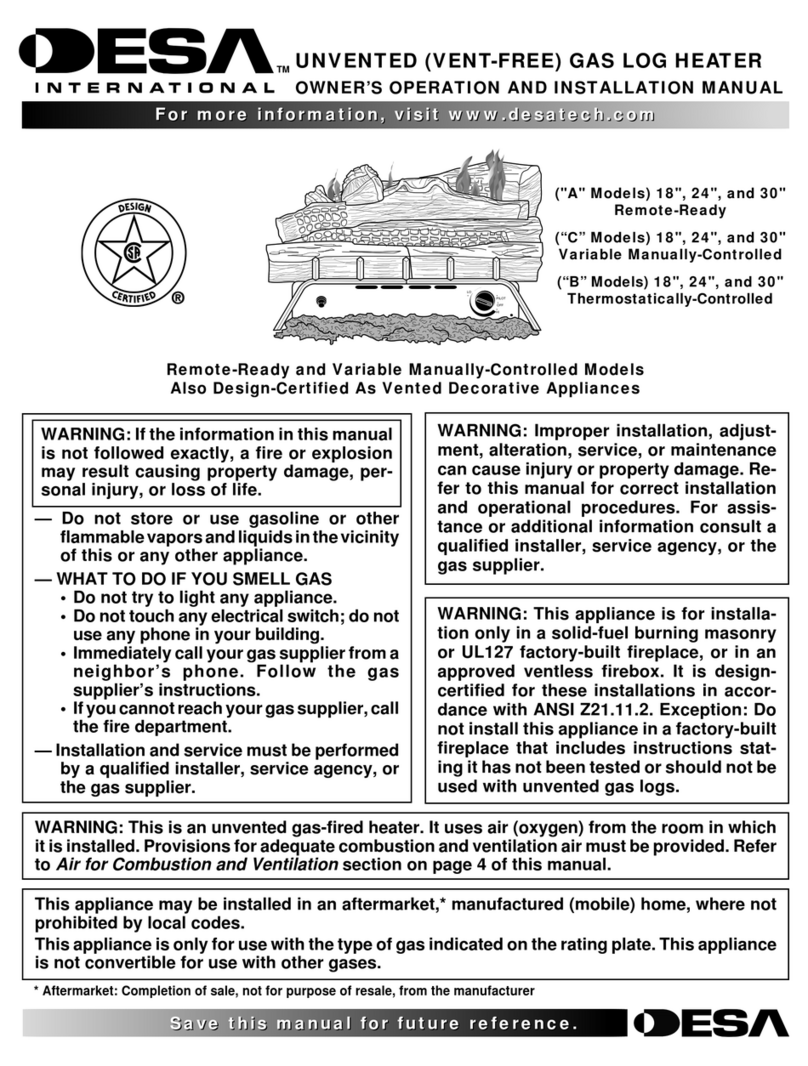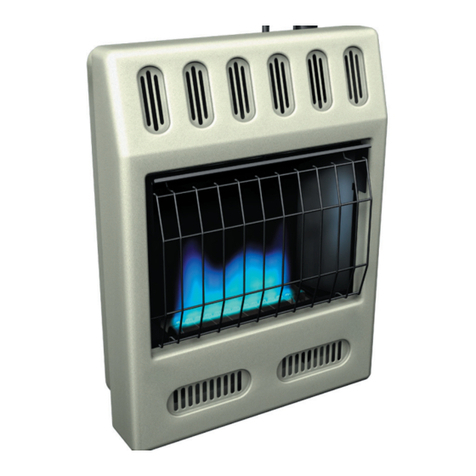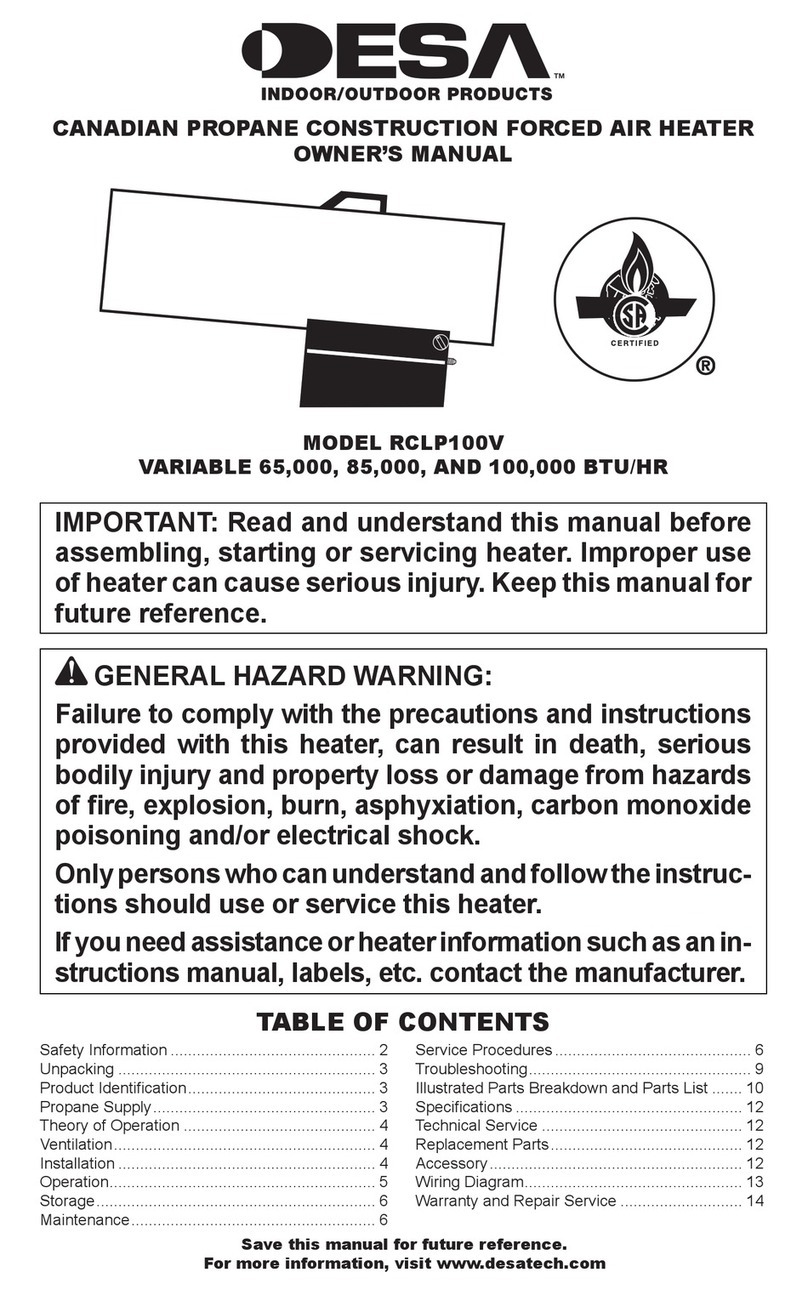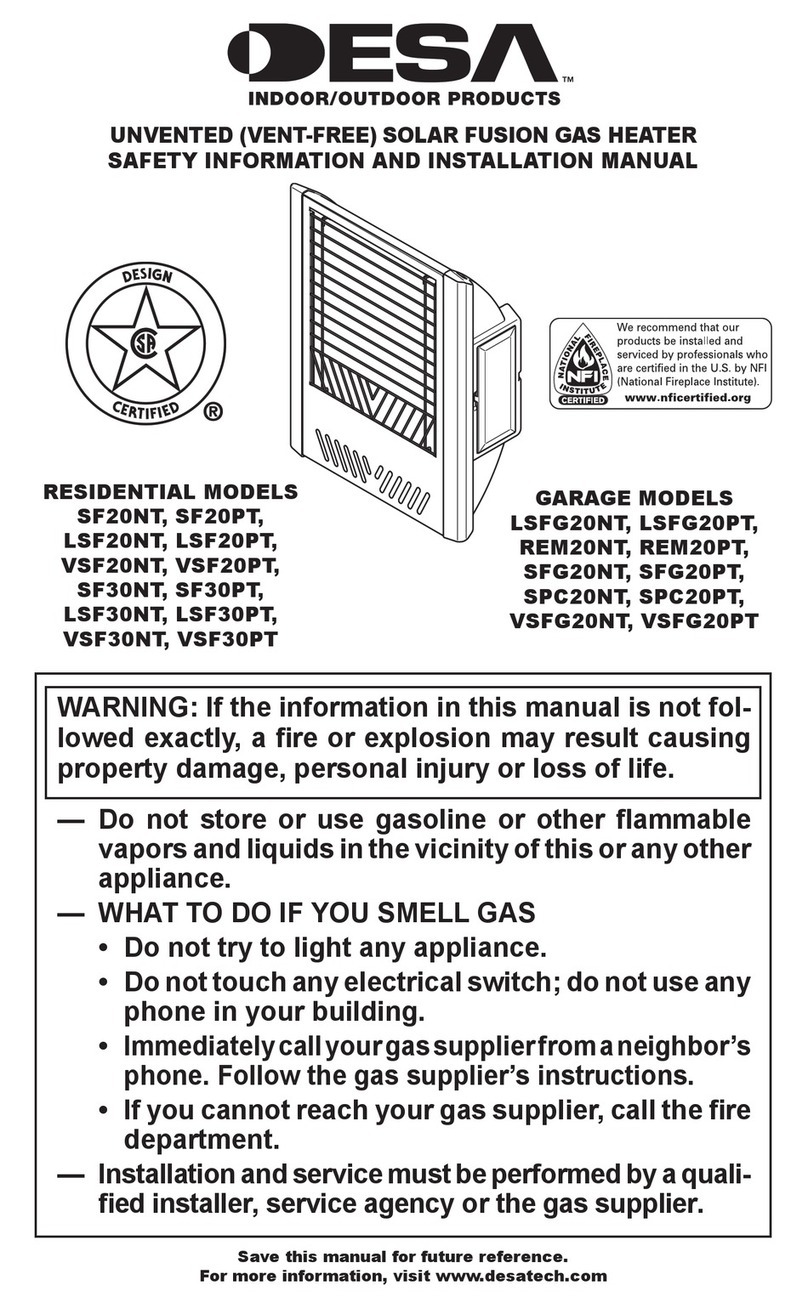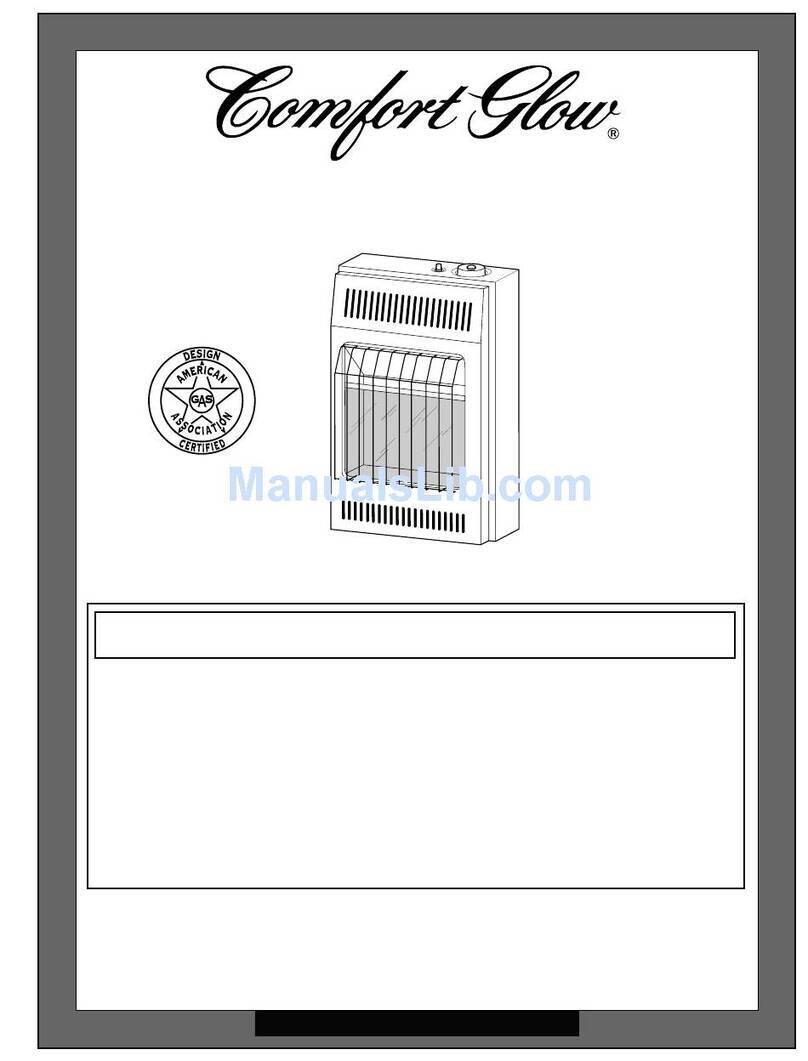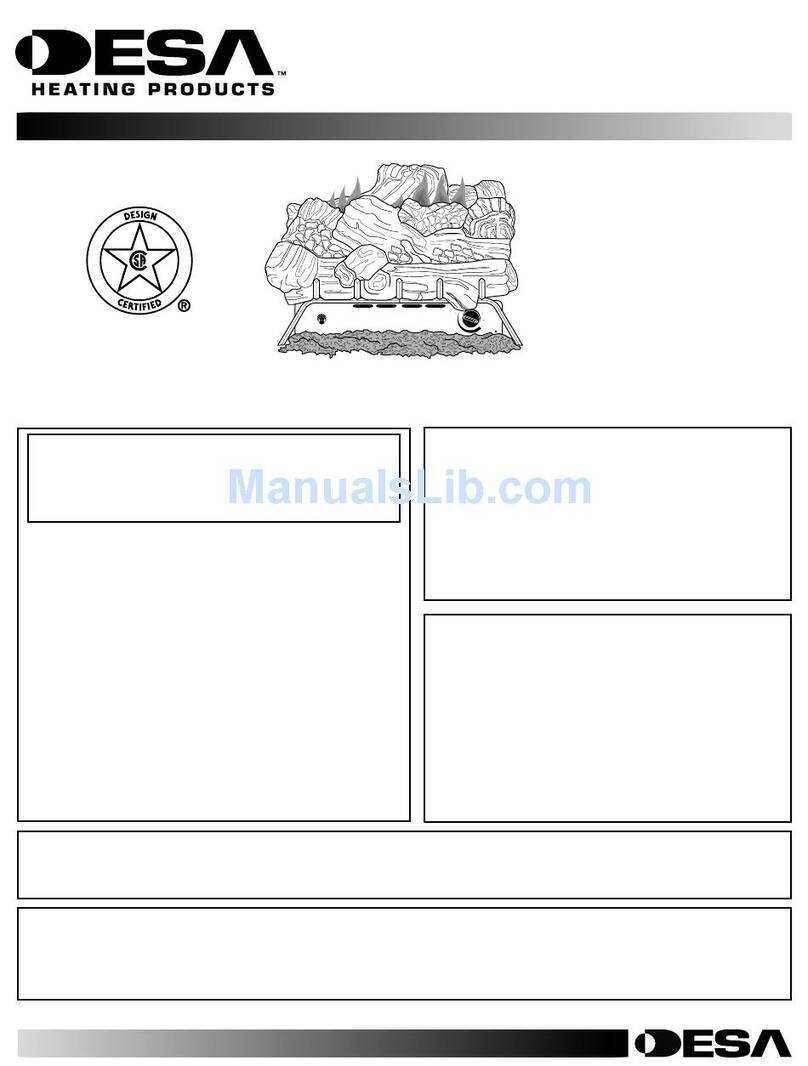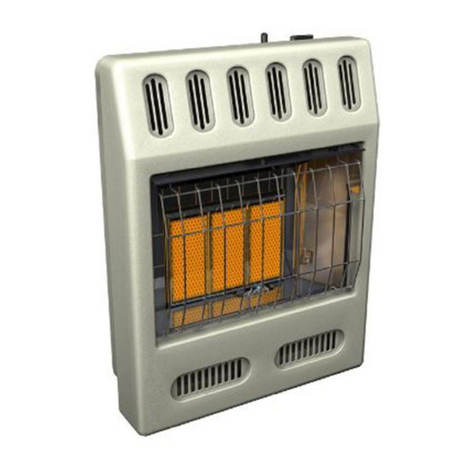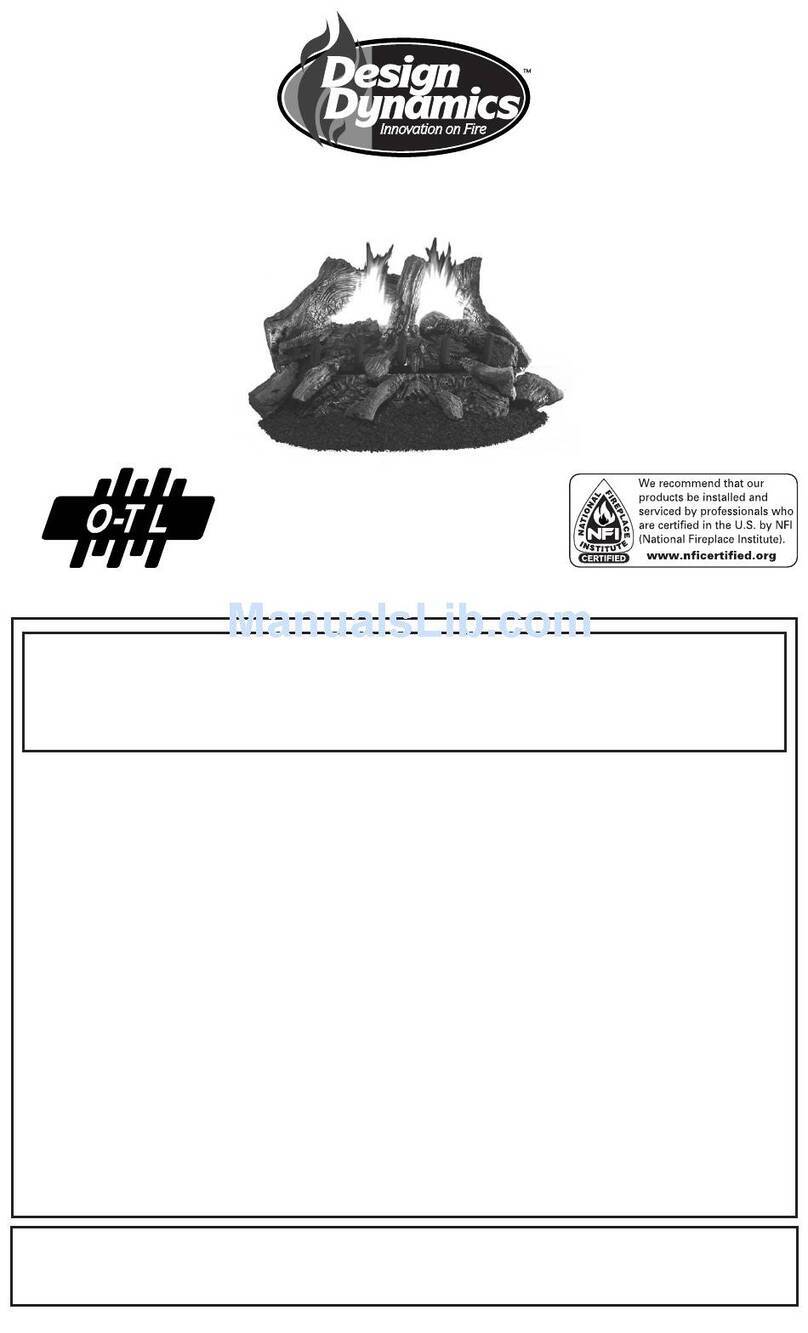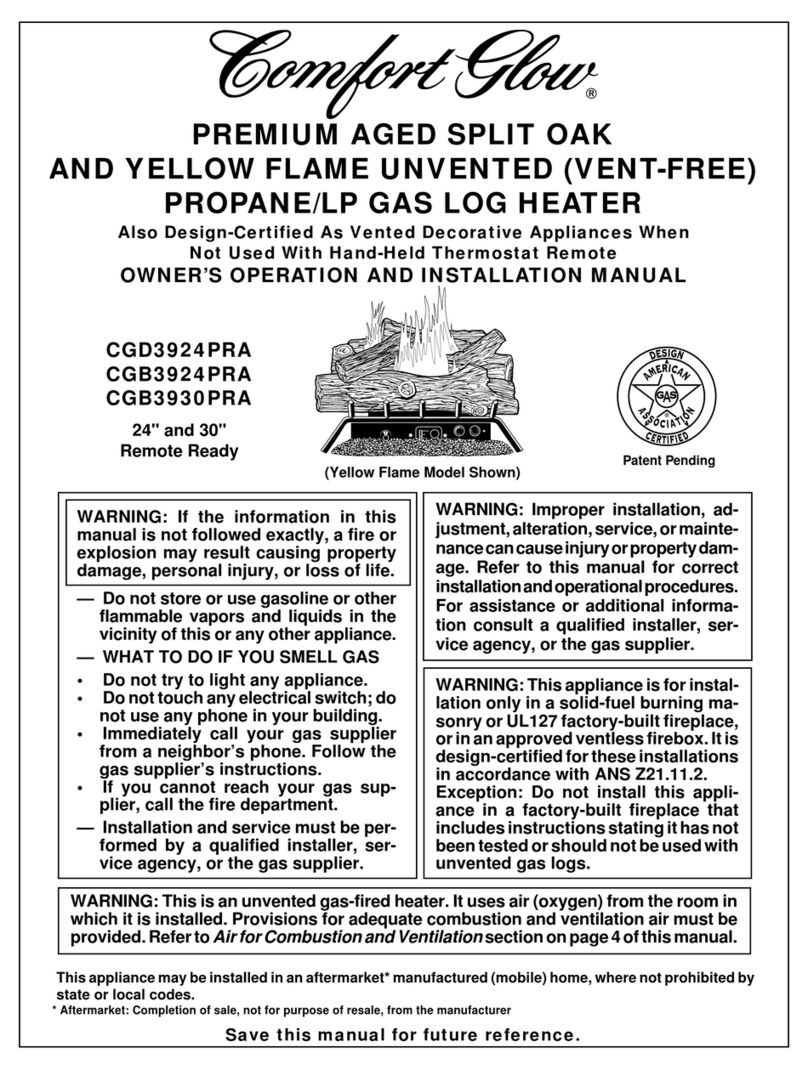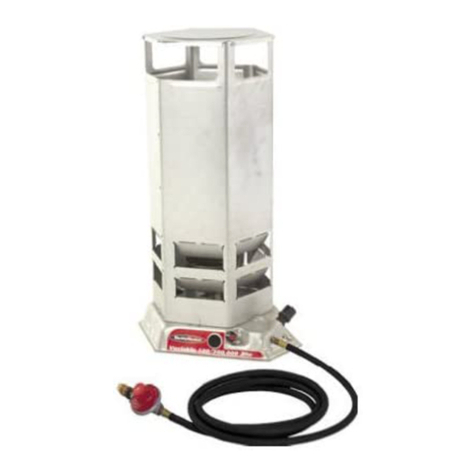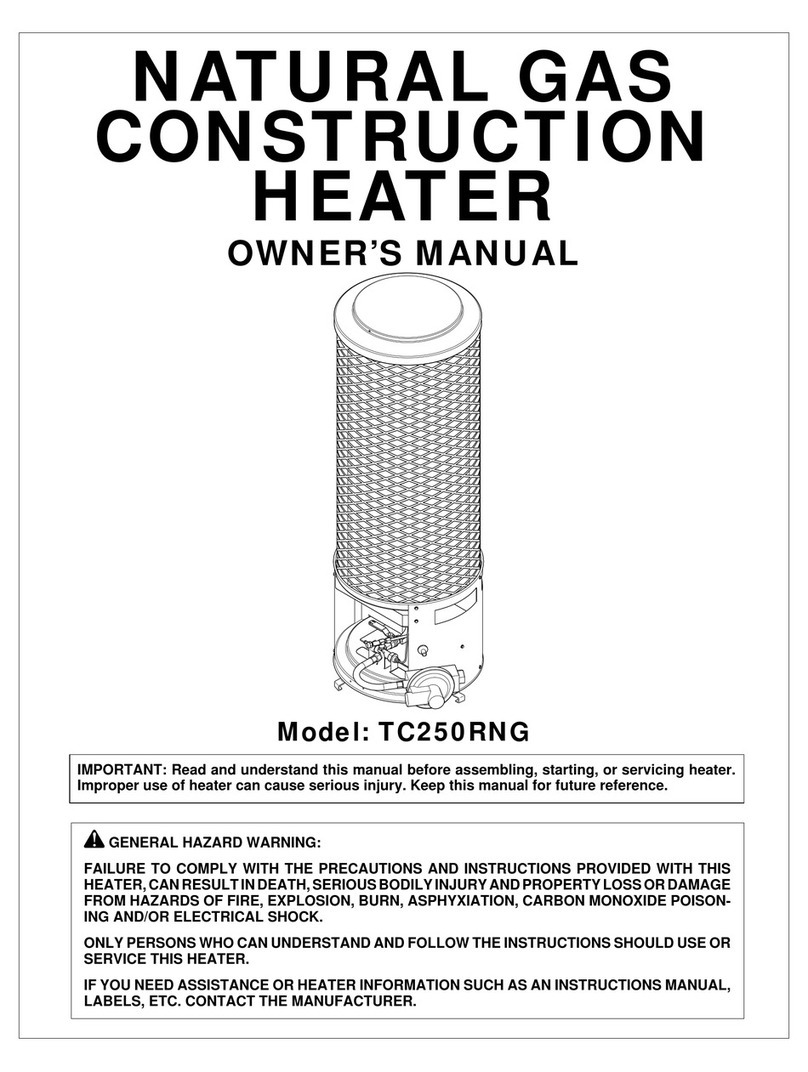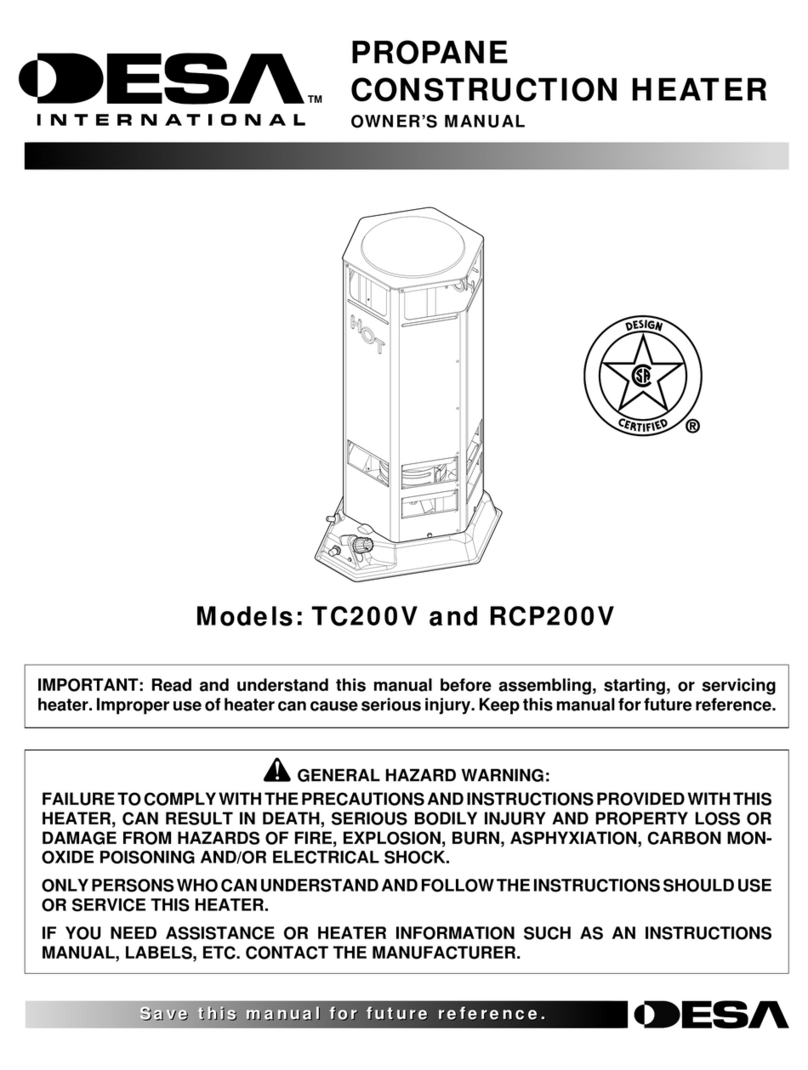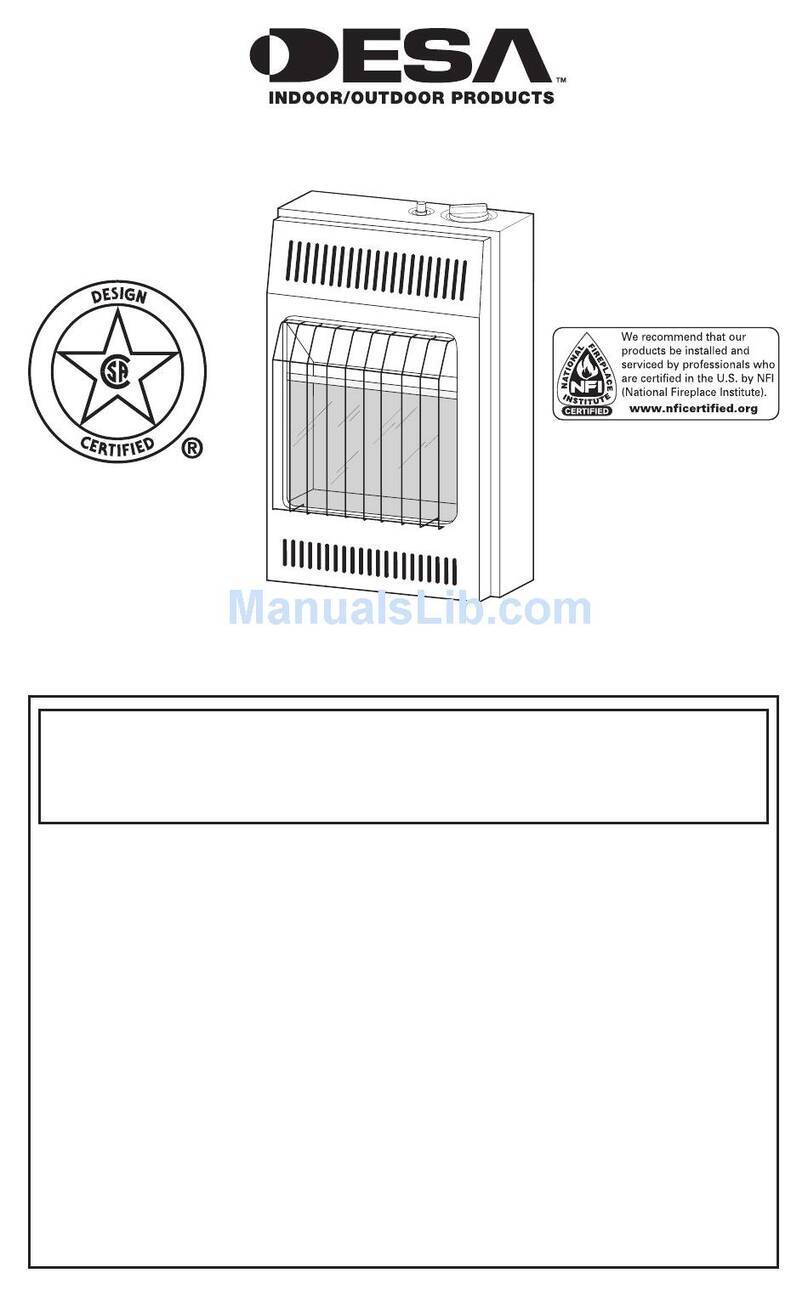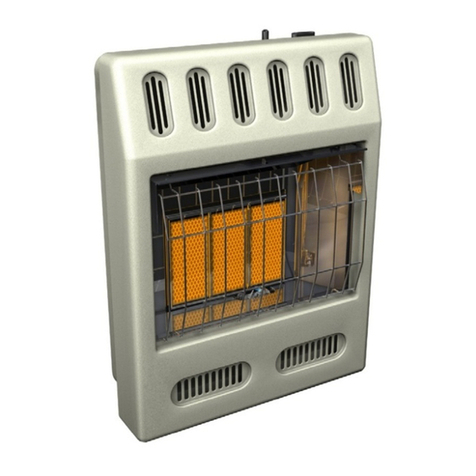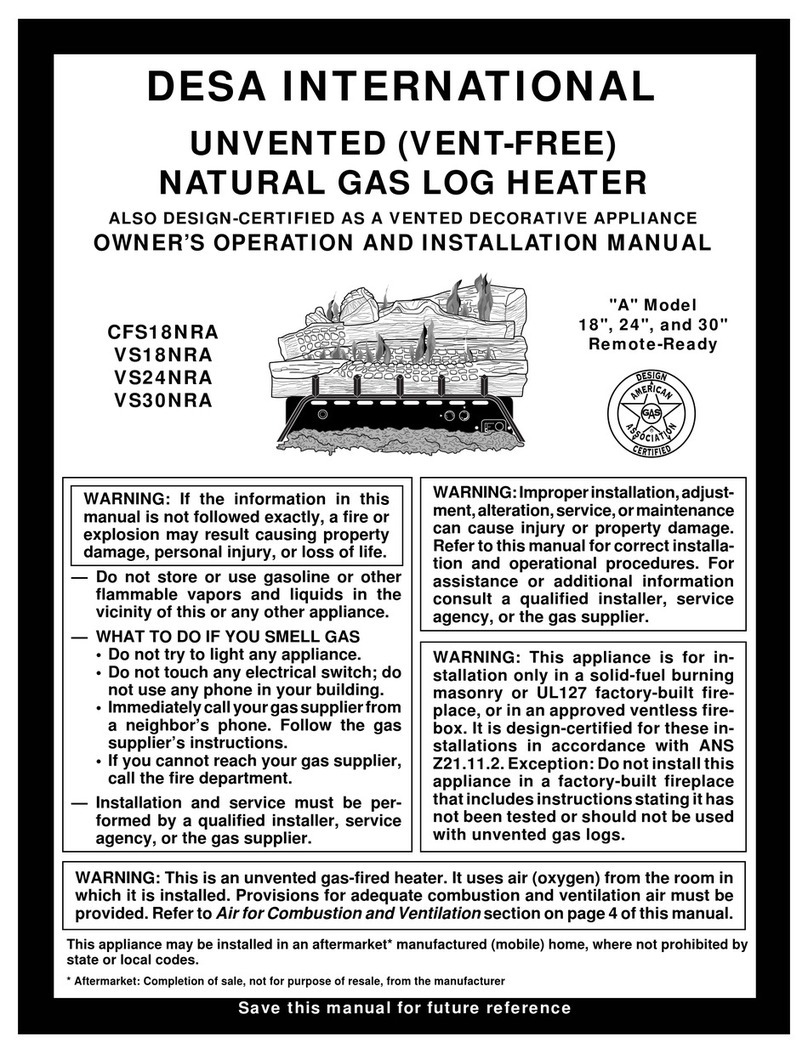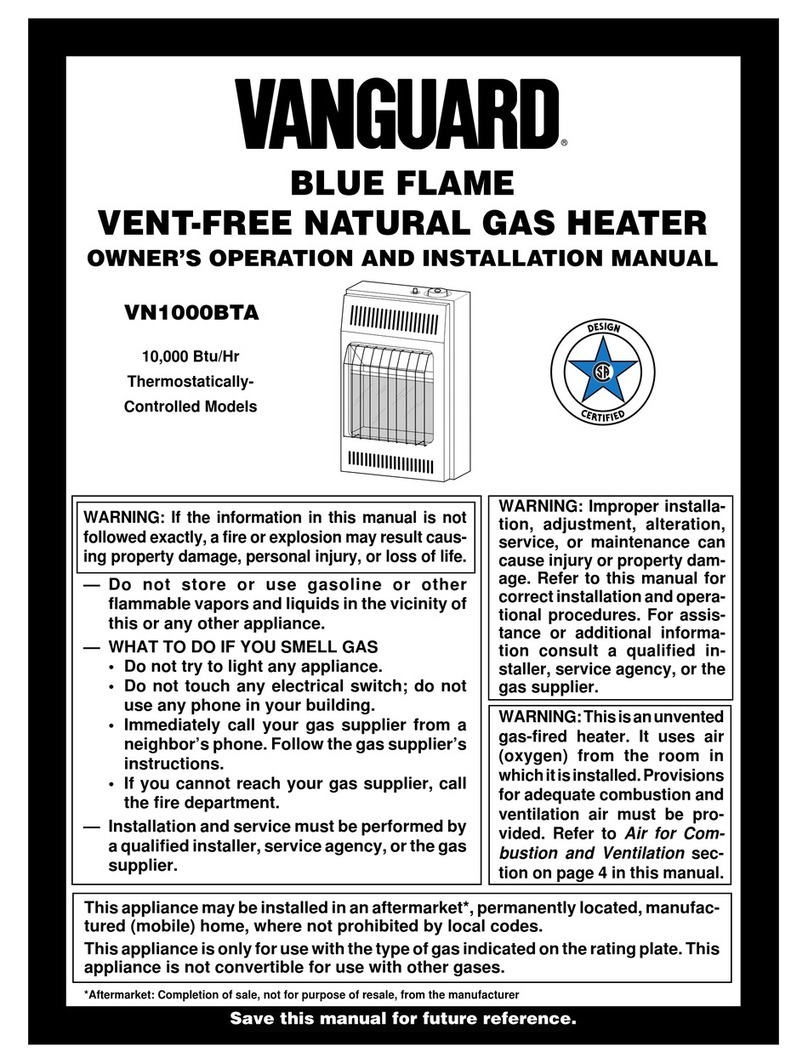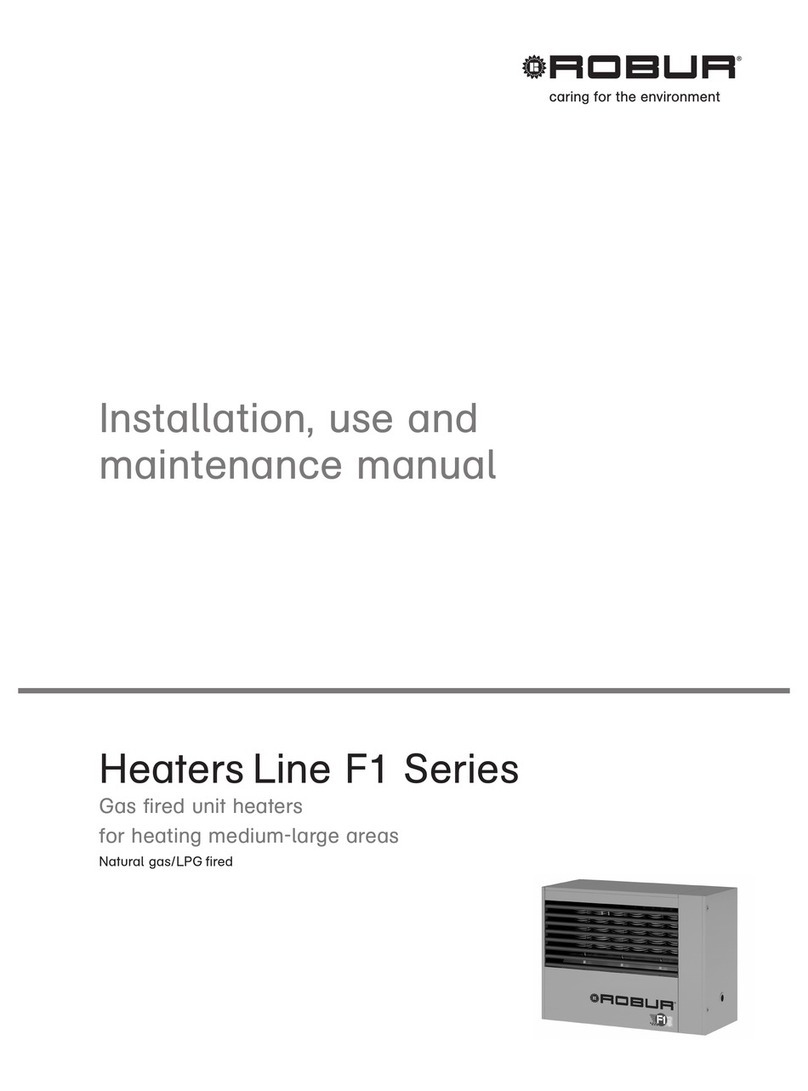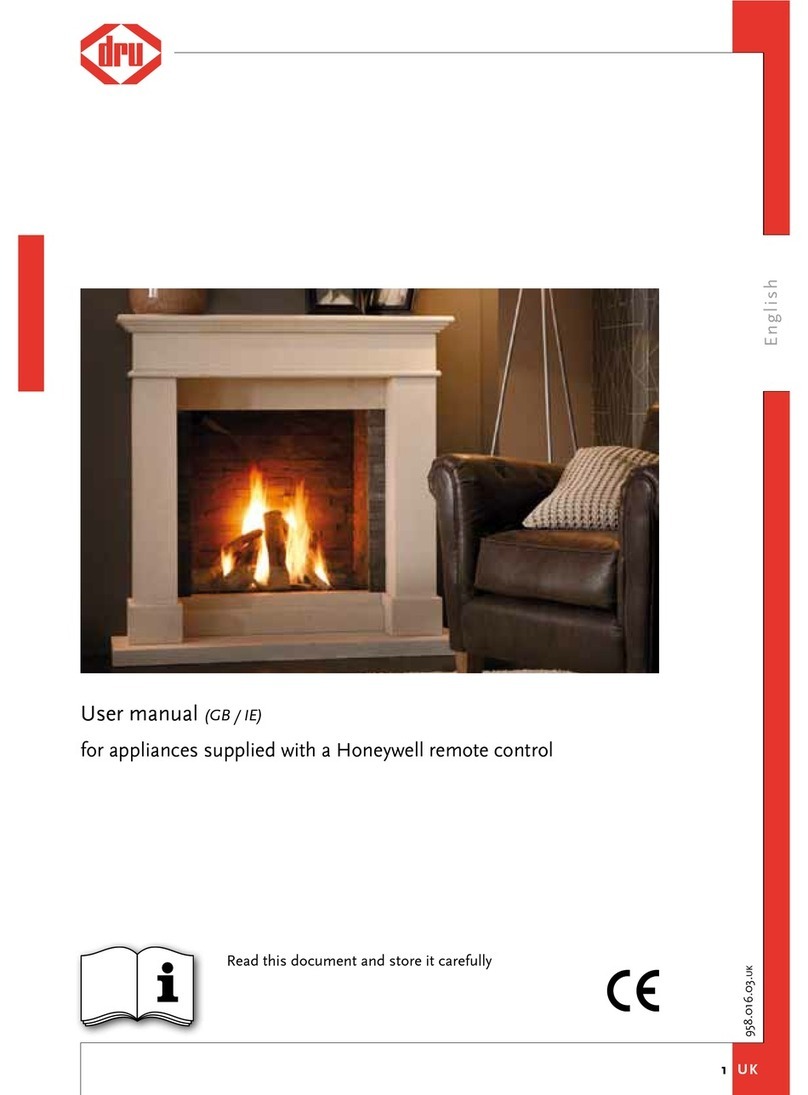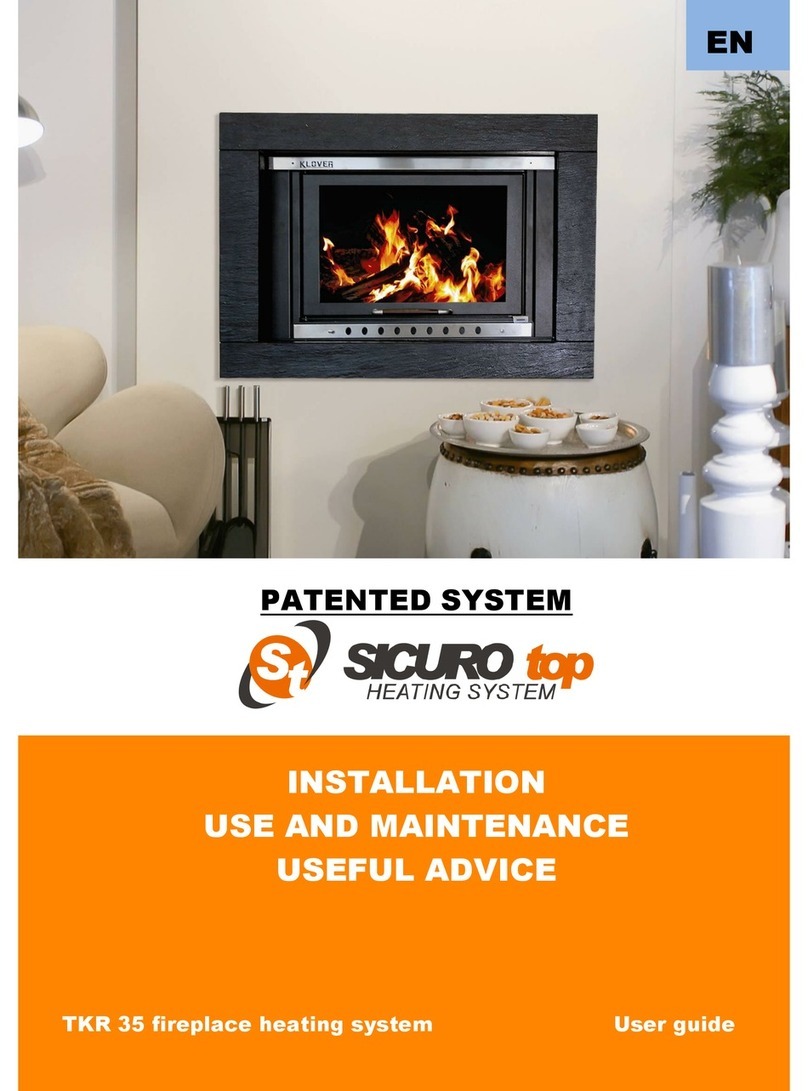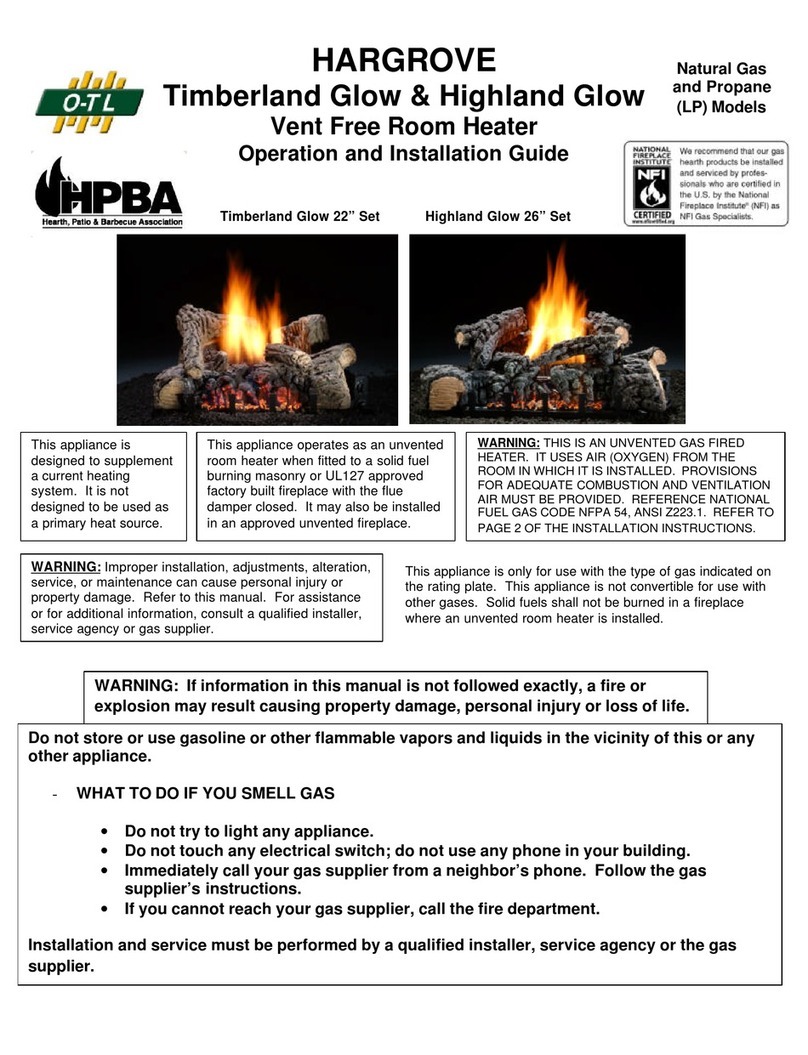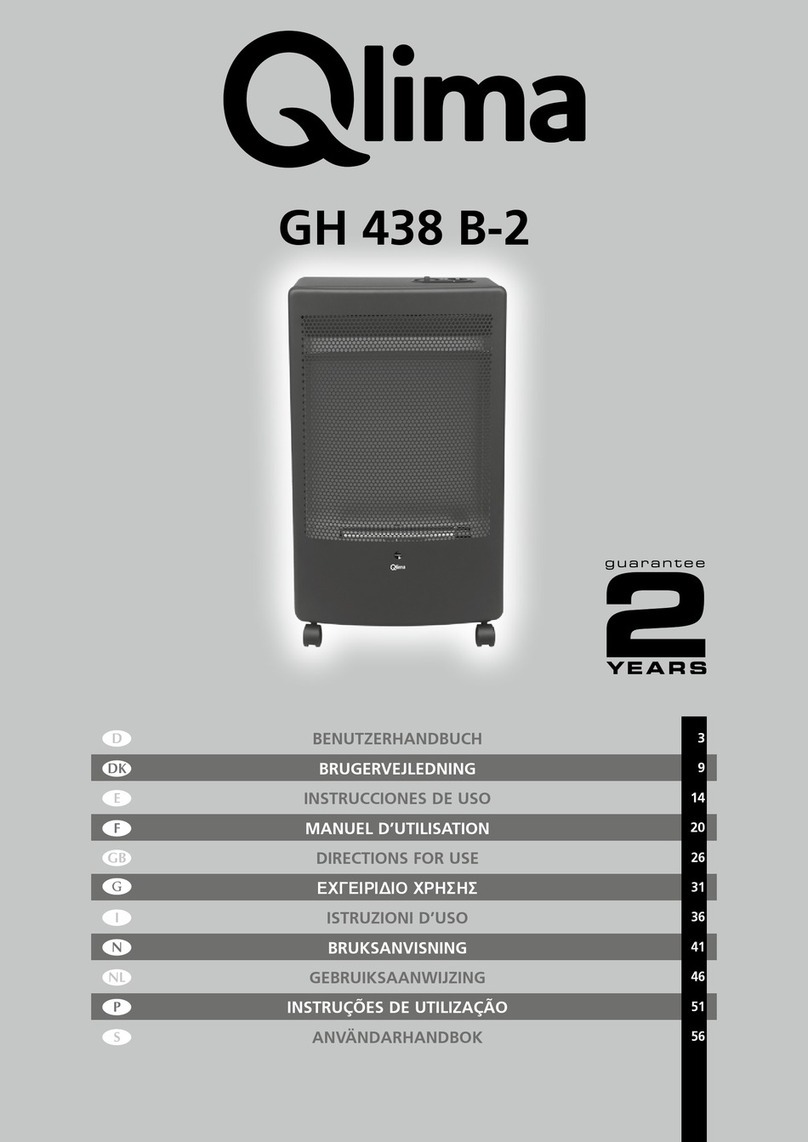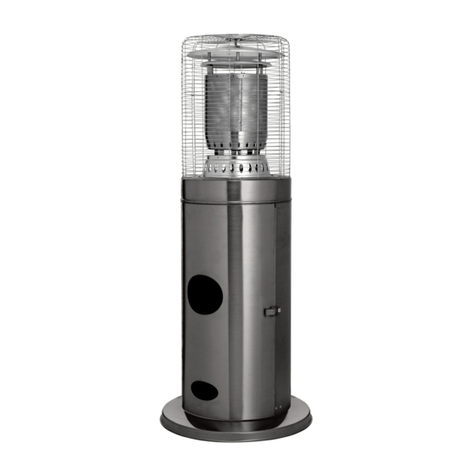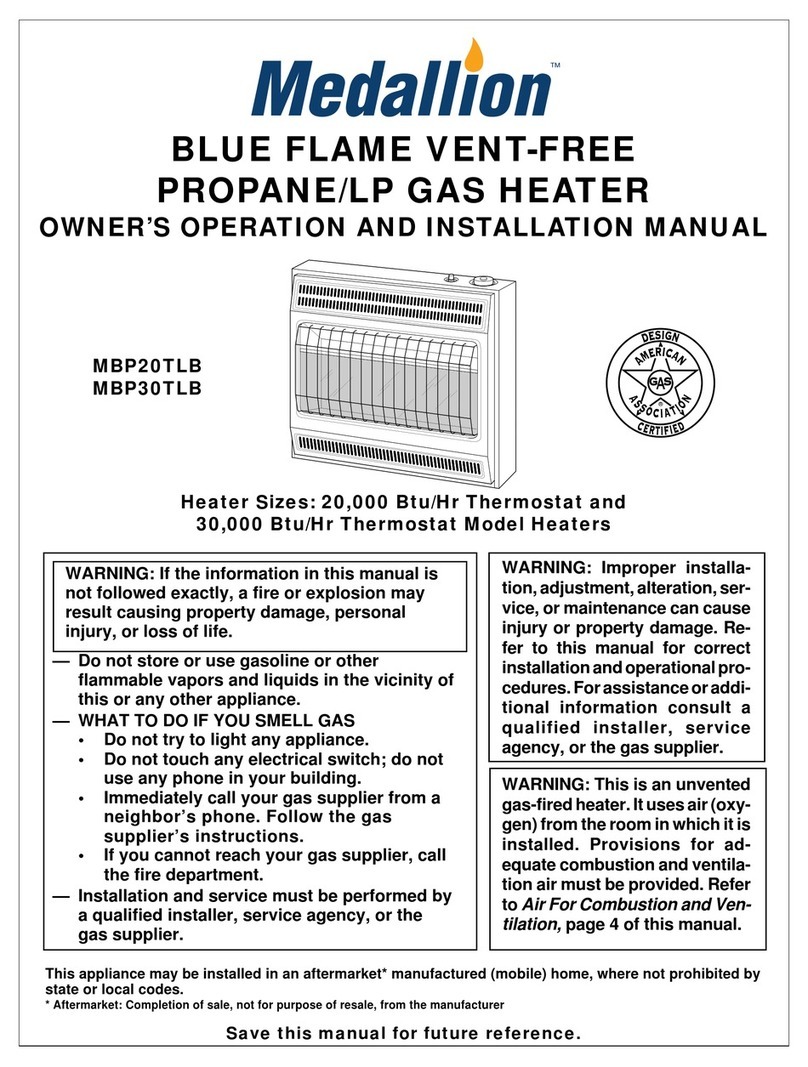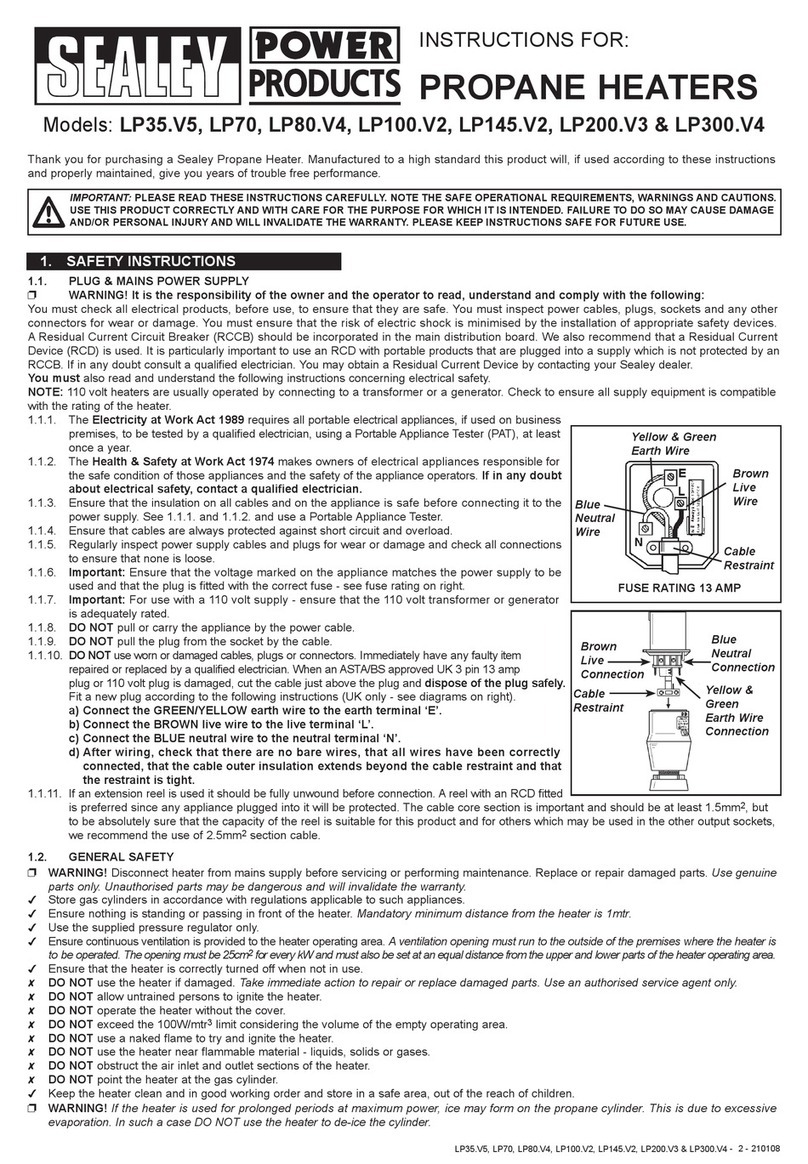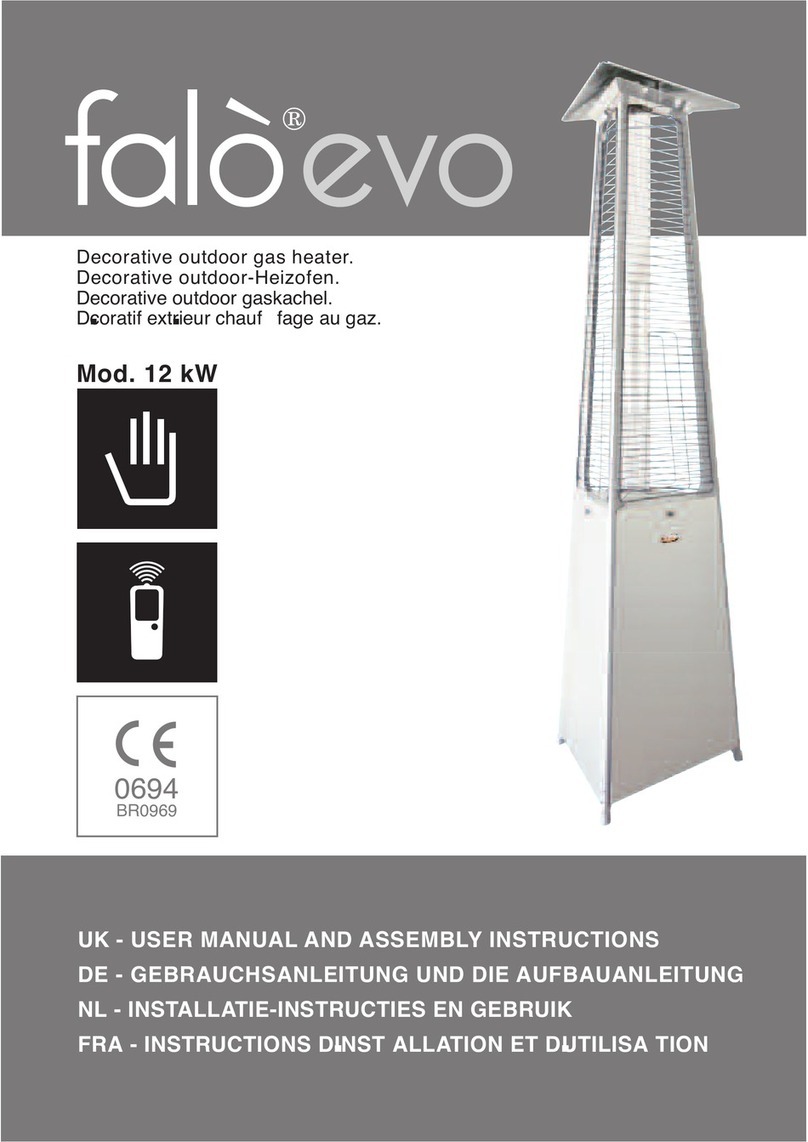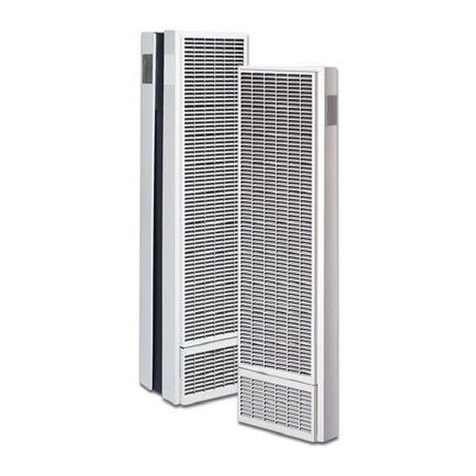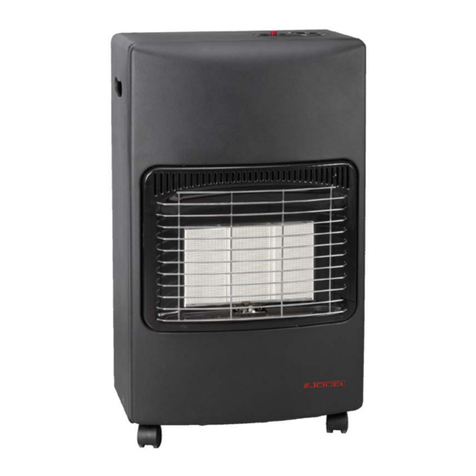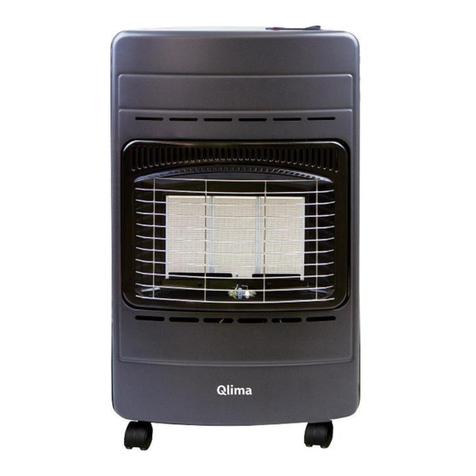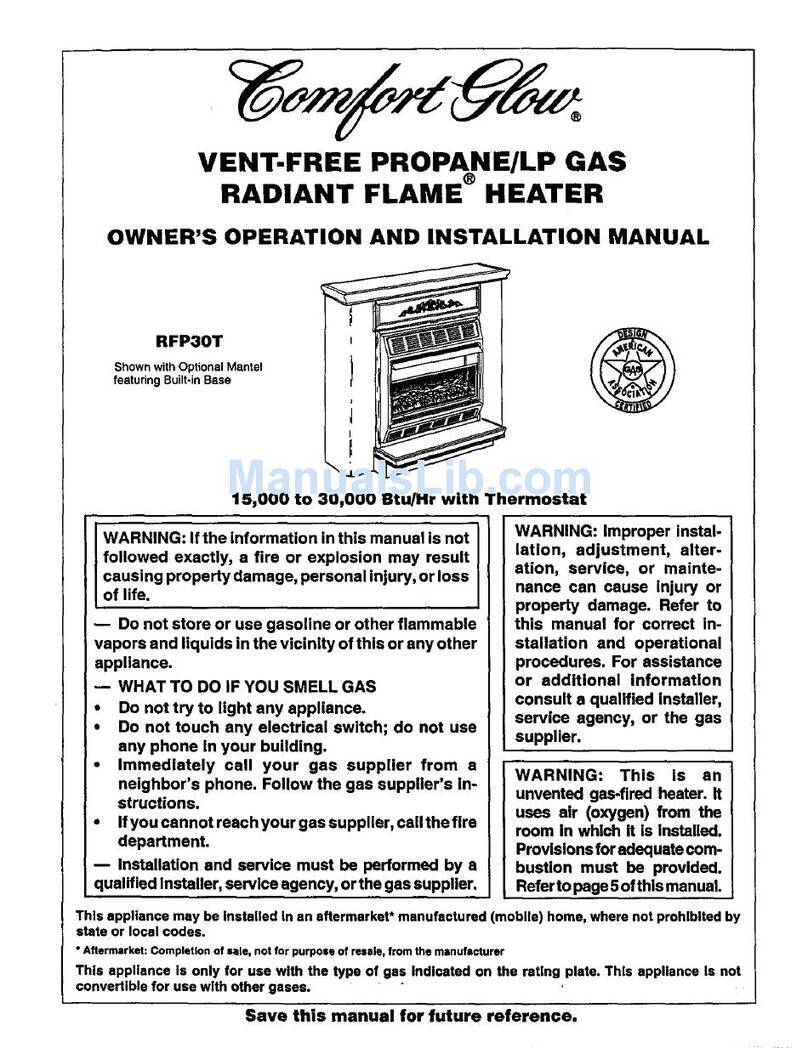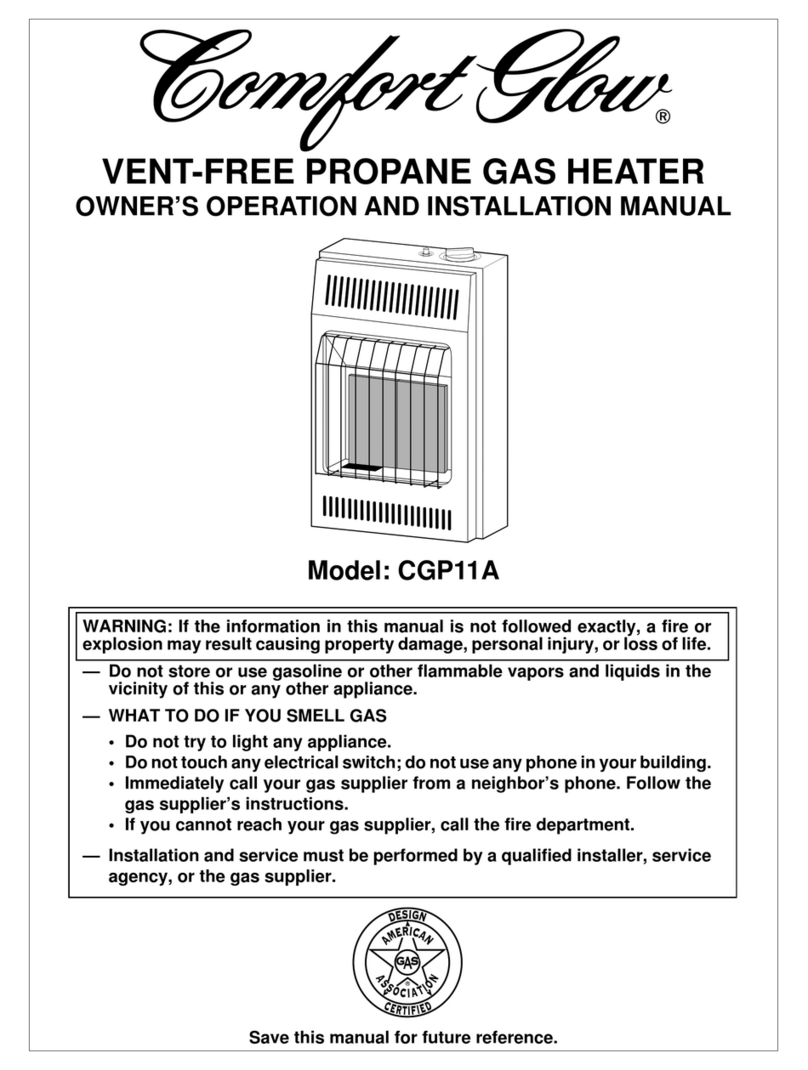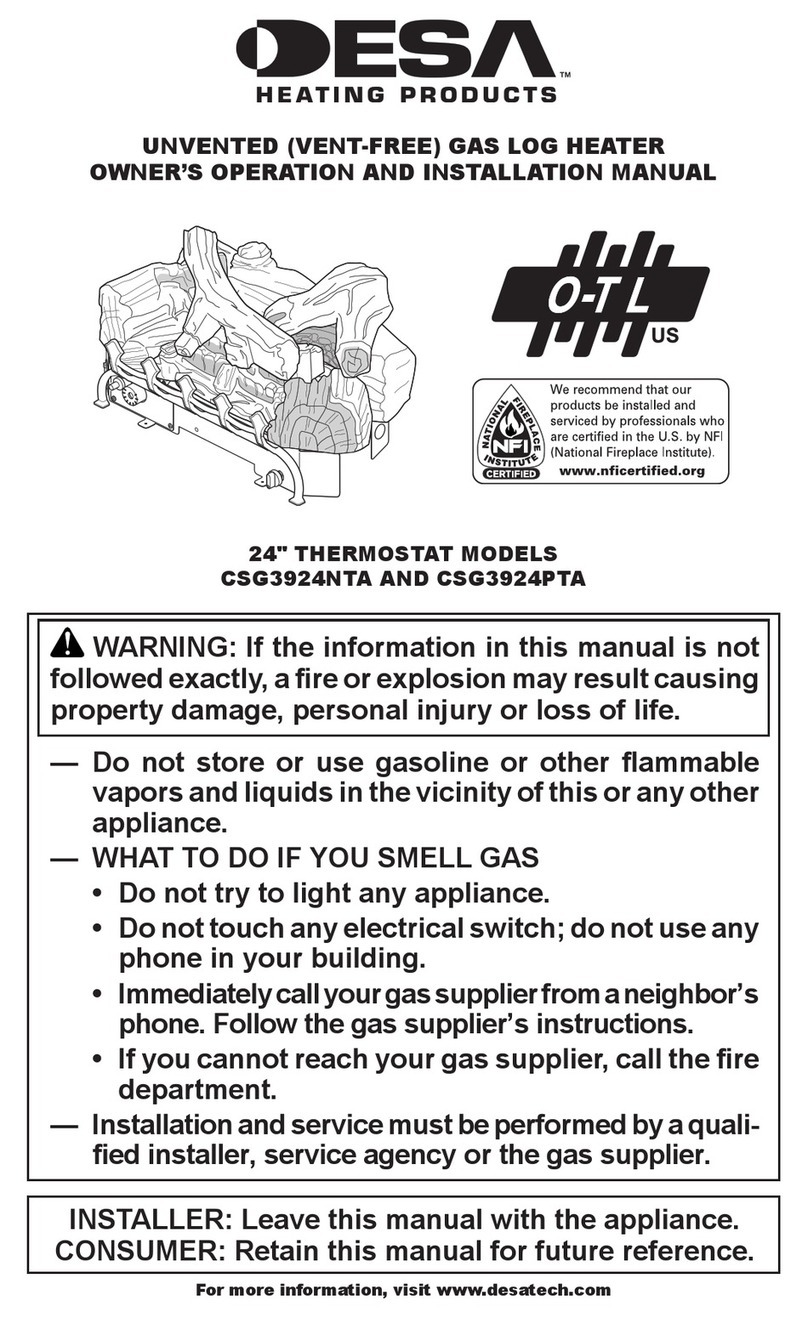
110399-01A
For more information, visit www.desatech.com
For more information, visit www.desatech.com
5
5
AIR FOR COMBUSTION AND
VENTILATION
Today’s homes are built more energy efficient than ever. New mate-
rials,increased insulation, andnew construction methods help reduce
heat loss in homes. Home owners weather strip and caulk around
windowsanddoorstokeepthecoldairoutandthewarmairin.During
heatingmonths,homeownerswanttheirhomesasairtightaspossible.
While it is good to make your home energy efficient, your home
needs to breathe. Fresh air must enter your home. All fuel-burning
appliances need fresh air for proper combustion and ventilation.
Exhaustfans,fireplaces,clothesdryers,andfuelburningappliances
drawairfromthehousetooperate.Youmustprovideadequatefresh
air for these appliances. This will insure proper venting of vented
fuel-burning appliances.
WARNING: This heater shall not be installed in a
confined space or unusually tight construction un-
less provisions are provided for adequate combus-
tion and ventilation air. Read the following instruc-
tions to insure proper fresh air for this and other
fuel-burning appliances in your home.
PROVIDING ADEQUATE VENTILATION
The following are excerpts from National Fuel Gas Code, ANSI
Z223.1/NFPA 54, Section 5.3, Air for Combustion and Ventilation.
All spaces in homes fall into one of the three following ventilation
classifications:
1. Unusually Tight Construction
2. Unconfined Space
3. Confined Space
The information on pages 5 through 7 will help you classify your
space and provide adequate ventilation.
Unusually Tight Construction
The air that leaks around doors and windows may provide enough
fresh air for combustion and ventilation. However, in buildings of
unusually tight construction, you must provide additional fresh air.
Unusually tight construction is defined as construction
where:
a. walls and ceilings exposed to the outside atmosphere
have a continuous water vapor retarder with a rating
of one perm (6 x 10-11 kg per pa-sec-m2) or less with
openings gasketed or sealed
and
b. weather stripping has been added on openable win-
dows and doors
and
c. caulking or sealants are applied to areas such as
joints around window and door frames, between sole
platesandfloors,betweenwall-ceilingjoints,between
wall panels, at penetrations for plumbing, electrical,
and gas lines, and at other openings.
If your home meets all of the three criteria above,
you must provide additional fresh air.See
Ventilation
Air From Outdoors
, page 7
.
Ifyourhomedoes not meet all of the three criteria above,
proceed to
Determining Fresh-Air Flow For Heater Loca-
tion,
page 6.
Confined and Unconfined Space
The National Fuel Gas Code, ANSI Z223.1/NFPA 54 defines a
confined space as a space whose volume is less than 50 cubic feet
per 1,000 Btu per hour (4.8 m3per kw) of the aggregate input rating
of all appliances installed in that space and an unconfined space as
aspacewhosevolumeisnotlessthan50cubicfeetper1,000Btuper
hour (4.8 m3per kw) of the aggregate input rating of all appliances
installed in that space. Rooms communicating directly with the
space in which the appliances are installed*, through openings not
furnishedwithdoors,areconsideredapartoftheunconfinedspace.
* Adjoining rooms are communicating only if there are doorless
passageways or ventilation grills between them.
PRODUCT FEATURES
OPERATION
This heater is clean burning. It requires no outside venting. There is
no heat loss out a vent or up a chimney. Heat is generated by both
realistic flames and glowing coals. This heater is designed for vent-
free operation with flue damper closed. It has been tested and
approved to ANSI Z21.11.2 standard for unvented heaters. State and
local codes in some areas prohibit the use of vent-free heaters. This
heater may also be operated as a vented decorative (ANSI Z21.60)
productbyopeningthefluedamper(Non-ThermostatModelsOnly).
SAFETY DEVICE
This heater has a pilot with an Oxygen Depletion Sensing (ODS)
safety shutoff system. The ODS/pilot is a required feature for vent-
free room heaters. The ODS/pilot shuts off the heater if there is not
enough fresh air.
PIEZO IGNITION SYSTEM
This heater has a piezo ignitor. This system requires no matches,
batteries, or other sources to light heater.
PRODUCT FEATURES
AIR FOR COMBUSTION AND VENTILATION
Providing Adequate Ventilation
